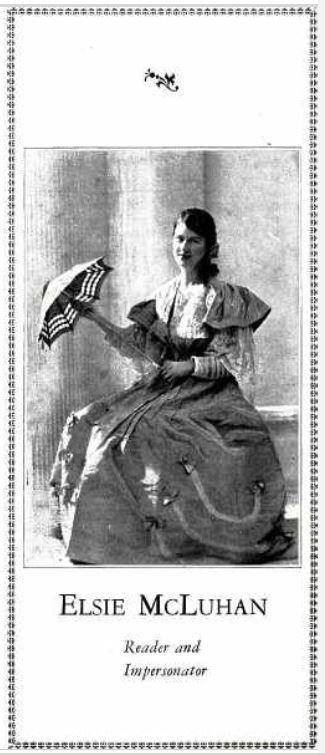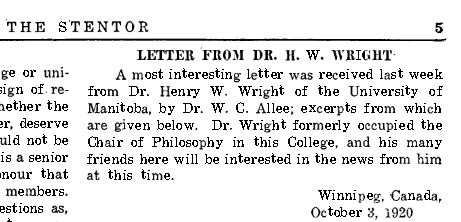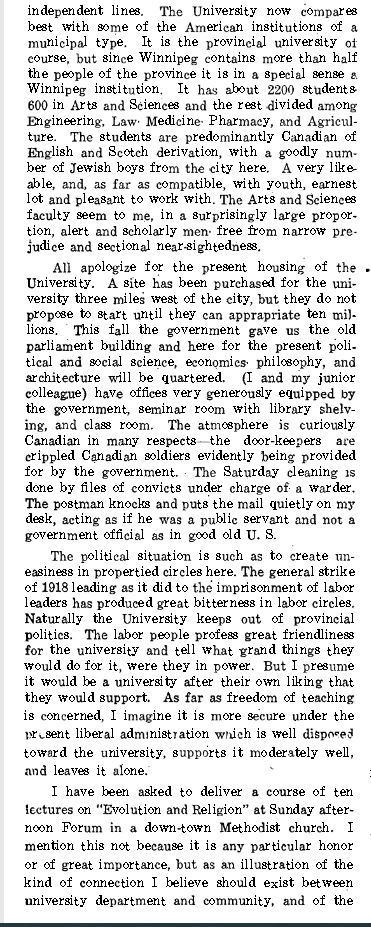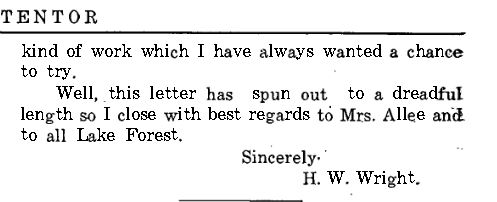To be aware of the past as presently useful and of much of the present as already irrelevant — this is to be a contemporary mind. And this mode of awareness is itself based on an analogy derived from relativity physics (…) whose usefulness to a society faced with the problems of world government and international community is as immense as it is as yet unexploited. (McLuhan’s Proposal to Robert Hutchins, 1947)
…”the meaning of meaning” is a relationship: a figure-ground process of perpetual change. The input of data must enter a ground or field or surround of relations that are transformed by the intruder, even as the input is also transformed. Knowledge, old or new, is always a figure that is undergoing perpetual change. (Take Today, 86)
McLuhan’s work applies relativity theory to all human experience to achieve a topological formulation of the entire experiential domain.
In his dialogue, L’Idée Fixe (1932), Valéry considers Einstein‘s relativity as the “physics of physics” or the geometry of geometries:
– it’s a question of disengaging what would be left of our physics if one were to make the observations (…) moving ad libitum in the Universe. It’s supposed that something, some residue of our laws — which were discovered and formulated under local conditions — would subsist in spite of the [arbitrary] motion of the observer (…) Relativity Theory wants to free him completely from all appearances due to local determinants of his measurements and to his [associated] state of motion. This Physics of Physics was conceived and constructed by Einstein as a Geometry (…) [To] take a crude illustration, imagine a flat sheet of rubber (…) Draw a figure on the sheet [like a triangle](…) Your triangle has [certain] properties (…) Now fold your elastic sheet, twist it, pull it any which way. What’s left of those properties? (…) Something remains. If you’d built a geometry on the plane triangle you [first] drew, and if you make another [geometry] that corresponds to one deformation of the rubber, and another to another—
– What a lot of geometries!
– It’s not absurd to look for axioms or propositions that—
– That won’t be subject to deformation.
– That’s it.1
Einstein himself is cited in Laws of Media from his foreword to Max Jammer’s Concepts of Space:
The victory over the concept of absolute space or over that of the inertial system [fixed frame of reference] became possible only because the concept of the material object was gradually replaced as the fundamental concept of physics by that of the field. Under the influence of the ideas of Faraday and Maxwell the notion developed that the whole of physical reality could perhaps be represented as a field whose components depend on four space-time parameters. If the laws of this field are in general covariant, that is, are not dependent on a particular choice of coordinate system, then the introduction of an independent (absolute) space is no longer necessary. That which constitutes the spatial character of reality is then simply the four-dimensionality of the field.2
Each of the geometries from Valéry’s example might be expressed as a particular application of three-dimensional covariance where, for example, the total surface area of the rubber sheet would be constant but the parameters constituting that total would all be variable.3 Or, rather, co-variable! Stretching the sheet would increase its length but decrease its width and thickness such that its total surface area would remain constant. The different geometries resulting from its deformation could then be defined as expressions of this covariance, as could any particular property of any of its particular geometries.
For Einstein, space-time itself is such a flexible matrix of four-dimensional covariance: an alteration in time results in a corresponding warping of the dimensions of space. Physical laws can then be reformulated not in relation to “an independent (absolute) space” and time, but in relation to that “four-dimensionality” itself — a “four-dimensionality” which, as the generator of all space-time possibilities, “constitutes the spatial character of reality”.4
McLuhan imagined himself as witnessing the strange spectacle of the generative ground of all the modalities of experience, like Alice:
Lewis Carroll looked through the looking-glass and found a kind of [hyper] space-time which is the normal mode of electronic man. Before Einstein, Carroll had already entered that very sophisticated universe of Einstein. Each moment, for Carroll, had its own space and its own time. (Gerald Stearn Interview)
In comparable fashion to Einstein, McLuhan wanted to know what “won’t be subject to deformation” across all the possible modalities of experience. The goal was to formulate something like experientiality — what it is that “constitutes the [non-deformative] character of [experiential] reality”.
McLuhan’s suggestion was that experience is the product of the co-variance of the visual and the acoustic senses as modulated by touch. “Common sense” or “synesthesia” or the “sensorium” remains constant, but its component “senses” co-vary. Stretch or twist or amplify one of them and the others change proportionately with it.
As he neared the end of his life, McLuhan became anxious to stress this aspect of his thinking. Apparently he felt that failure to understand it was one of the factors in the general failure to understand him. It is emphasized repeatedly in the posthumous Global Village:
- In our desire to illumine the differences between visual and acoustic space, we have undoubtedly given a false impression: and that is that the normal brain, in its everyday functioning, cannot reconcile the apparently contradictory perceptions of both sides of the mind. (GV 48)
- every artifact of man mirrors the shift between these two modes. (GV x)
- within each of man’s inventions (extensions of himself) left- and right-hemisphere modes of thought struggle for dominance (GV 102)
- No matter how extreme the dominance of either hemisphere in a particular culture, there is always some degree of interplay between the hemispheres… (GV 62)
- visual and acoustic space are always present in any human situation, even if Western civilization has (…) tamped down our awareness of the acoustic. (GV 55)5
It is imperative to note that the senses and hemispheres are used here in a technical sense that has little to do with our usual notions of them.6 Hence it is that McLuhan did not consider television a visual medium, but he did consider symphonic music to be visual. A great many critics have laughed up their sleeves at this, of course. But consider Einstein’s use of ‘space’ and ‘time’. For him, these are not, or are not only, what we see when we look out a window or check our watch. Instead, ‘space’ and ‘time’ for Einstein are co-variable factors in an equation constituting dimensionality. Our usual experience of them is simply one modality of that equation.
So with McLuhan. The visual and the acoustic and touch (to which he assimilated smell and taste) are not captured in our usual experience of them (although it is important to note that ‘our usual experience’ is very far from being the singular, clear, matter it may thoughlessly be taken to be). Instead, these are co-variable factors in an equation constituting experientiality, ‘Our usual experience’ must be understood in terms of it, not it in terms ‘our usual experience’. As Minkowski specified in his Space and Time lecture from 1908: “three-dimensional geometry becomes a chapter of four-dimensional physics”.7
McLuhan could therefore have reformulated the passage from Einstein’s foreword to Jammer’s Concepts of Space as follows:
The victory over the concept of absolute experience or over that of the inertial system became possible only because the concept of the experiential object was gradually replaced as the fundamental concept of psychology and sociology by that of the field. Under the influence of the ideas of Faraday and Maxwell and Einstein the notion developed that the whole of experiential reality could perhaps be represented as a field whose components depend on three sensual parameters. If the laws of this field are in general covariant, that is, are not dependent on a particular choice of coordinate system, then the introduction of an independent (absolute) experiential space is no longer necessary. That which constitutes the character of reality in experience is then simply the three-dimensionality of the field.
McLuhan seems to have come clear about these ideas through the writing of Project in Understanding New Media in 1959 and 1960. Here he is writing to Walter Ong on November 18, 1961 (Letters, 280-281):
My theory is only acceptable to Thomists for whom consciousness as analogical proportion among the senses from moment to moment is quite easy to grasp. But print technology actually smashes that analogical awareness in society and the individual. (…) I can now explain these matters very much better than I did in [The Project in] Understanding [New] Media. But no more evidence is needed of the hypnotic aspect of all media in human history than the absence of awareness among those who underwent [subjection to] them. Each is invested with a cloak of invisibility. I am naturally eager to attract many people to such study as this and see in it the hope of some rational consensus for our externalized senses. A sensus communis for external senses is what I’m trying to build.
With the terms “externalized senses” and “external senses” McLuhan was referring not only to the devices we have learned to build to enhance or mimic human senses like the telephone and television. He was also indicating that just what the “senses” are is a question and not at all something obvious. The “external senses” are “external” to us not only in a spatial sense; they are also “external” to our usual ‘sense’ of them. So, as treated above, McLuhan’s “hope of some rational consensus for our externalized senses”, aka of a new sort of exterior “sensus communis”, was predicated upon on the revision of the visual and the acoustic and touch in their covariance. And the resulting operating system, although it would recall the ‘natural’ physiological sensorium of the individual human being, would be neither individual nor autonomic. Instead, like any hard science (but built just as much on the “orchestral” principles of art), it would turn on an evolving “consensus” achieved through open investigation and would be both social and conscious.8
Now McLuhan and Ong had known each other for twenty years by this time, ever since McLuhan had directed Ong’s M.A. thesis on Hopkins at St Louis University and suggested to Ong the topic for his later PhD work at Harvard on Ramus. But McLuhan’s relationship with Bernie Muller-Thym at SLU was even older than this and was more profound both on a personal level (Muller-Thym was the best man for McLuhan’s wedding and the Godfather of both Eric and Mary) and on an intellectual one (for here McLuhan was the student of Muller-Thym’s knowledge rather than Ong’s teacher of his own). And it was with Muller-Thym that McLuhan had deeply considered the analogical proportion among the senses in Aristotle and Thomas.9 So it was to Muller-Thym that McLuhan owed the announcement of his breakthrough to topology:
The break-through in media study has come at last, and it can be stated as the principle of complementarity10: that the structural impact of any situation is subjectively completed as to the cycle of the senses. (McLuhan to Muller-Thym, February 19th, 1960, cited by Gordon, 313.)11
Again to Muller-Thym a few weeks later:
any [increased] intensity in the (…) input (ie. High Definition) completely alters the over-all structure [of the sensorium] as compared with Low Definition. So that, for example, manuscript is low definition for the visual part of writing and the speech within the code, as it were, is in relatively high definition. So that a manuscript is read aloud and in depth. The same materials put in print have the visual (…) in high definition and the speech goes into very low definition and print is read silently… (McLuhan to Muller-Thym, March 7, 1960, Letters, 262)12
What may be seen in these letters to Muller-Thym is the dis-covery of the “complementarity” or covarience of the senses and of media (conceived as promoting, or even instantiating, specific structural patterns of the senses). Change in any one sense “completely alters the over-all structure” (aka, the sensus communis or sensorium) in a rule-governed way. High Definition and Low Definition of any sense are correlated like a string pulled back and forth around a nail such that the more string on one side of the nail, the less on the other.
The sensory system, in turn, may be imagined on the same model but with multiple strings and multiple nails. Imagine that two strings of equal length are joined together by a knot. Then imagine 4 nails hammered into a board in a row. Imagine that the knotted string is put over the first nail, under the second, over the third and under the fourth again. Imagine that the knot joining the two strings is located between the second and third nails and that these nails constitute a kind of gate preventing the knot of the string from being pulled beyond the second nail in the direction of the first or beyond the third nail in the direction of the fourth. McLuhan’s suggestion is simply that the two strings may be taken as the visual and the acoustic senses and touch or tactility as their knot with its gates. The more the string is pulled in the visual direction, the less there will be of it in the acoustic one. McLuhan’s further hypothesis is that the ratio of these two lengths is the atomic structure of experience. But since these correlated distances may simply be read by the place of the knot within the space of the gates (where its location determines the two lengths outwards beyond the second and third nails respectively), experience may be said to be fundamentally structured by those points that the knot can assume along the distance between the second and third nails. (See here for further elaboration.)
The fundamental importance of such a coded definition of experientiality for McLuhan was that it would allow communication between cultures and the formulation of common values between them without the assertion of some purported absolute experience or accepted inertial system. He could see, on the one hand, that modern media force such relativity on us:
Total global coverage in space, instantaneity in time. Those are the two basic characters that I can detect in a (…) mass medium. (Culture Without Literacy, Explorations 1, 1953)
It is the relativity of all space and all time resulting from the simultaneous co-presence (“allatonceness”) of ‘mass media’ (plural) in their multiple “total global coverage” that forces our recognition of a
need to discover means for translating the experience of one medium or one culture into another, of translating Confucius into Western terms and Kant into Eastern terms. Of seeing our old literary culture in the new plastic terms in order to enable it to become a constitutive part of the new culture created by the orchestral voices and gestures of new media.13 Of seeing that modern physics and painting and poetry speak a common language and of acquiring that language at once in order that our world may possess consciously the coherence that it really has in latency, and which for lack of our recognition has created not new orchestral harmonies but mere noise.14 (Ibid.)
Such a “means for translating” what McLuhan elsewhere called “the entire world of language and consciousness”15 could naturally not be achieved within a single modality of experience. And besides:
Already in the sciences there is recognition of the need for a unified field theory which would enable scientists to use one continuous set of terms by way of relating the various scientific universes. (Ibid.)
Only in an analogous “unified field theory” of all human experience could the confounding situation be addressed in which
Are we not still inclined to suppose that our former objectives are still valid even though all of our assumptions and parameters have changed? (NAEB Project, 1960, ”Materials Developed By Project”)
- Translated by Eleanor Wolff. Her abbreviated translation of L’Idée Fixe appeared originally in Meja, Number Two (Autumn 1946), edited by Herbert Steiner. It was reprinted in ETC, ed S.I. Hayakawa, 6:1, 1948. For Hayakawa as a member of the Winnipeg School of Communication see here. ↩
- Laws of Media, 41 ↩
- This example is greatly simplified. The topology of the rubber sheet would. of course, be much more complicated, as would its geometries, once it were considered as, eg, tightly twisted. ↩
- ‘Constitutes’ here should be taken in a verbal sense as ‘generates’, not, or not primarily, in the sense of ‘is the stuff of’. ↩
- Compare already in 1955: “In examining the historical development of the media of communication it is necessary to consider this type of evolution that occurs in a single visual area, because it is inseparably linked to the auditory and other senses. The peculiarity of language, as Paul Elmer More observed, is that it is the medium ‘by which we undertake to convey experience completely and directly rather than as divided and refracted by a particular organ of perception’ (‘The Drift of Romanticism’, 1913). Words are an orchestral harmony of touch, taste, sight, sound and kinaesthesia” (‘A Historical Approach to the Media’). Compare McLuhan’s close friend and co-author, Barry Nevitt: “whatever the eye receives is modified by the ear” in ‘Pipeline or Grapevine: The Changing Communications Environment’, Technology and Culture, Volume 21, 224, 1980. For “orchestral harmony” see note #14 below. ↩
- Cf the first sentence of ‘Myth and Mass Media‘ from 1959: “When an attempt is made to bring the relatively articulated concept of “myth” into the area of “media”, a concept to which surprisingly little attention has been given in the past, it is necessary to reconsider both “myth” and “media” in order to get at relevant data.” This follows immediately from ‘the medium is the message’ since every object, including “myth” and “media”, is only what it is taken to be via some medium. To take that medium into consideration is to “reconsider” its contents. ↩
- Raum und Zeit: “Die dreidimensionale Geometrie wird ein Kapitel der vierdimensionalen Physik.” ↩
- McLuhan in The Medium Is the Massage: “Joyce could see no advantage in our remaining locked up in each cultural cycle as in a trance or dream. He discovered the means of living simultaneously in all cultural modes while quite conscious” (120). See note #15 below. ↩
- In 1940 Muller-Thym published ‘Common Sense, Perfection of the Order of Pure Sensibility’ in The Thomist, 2:315–343. Long before this, at Cambridge, McLuhan had been exposed in the work of I.A. Richards to the idea that the sensorium might supply the structural key for the analysis of language and meaning. (See the concluding ‘Synaesthesis’ chapters of The Foundations Of Aesthetics by Richards, Ogden and Wood from 1921.) And in the work of Maritain, Gilson and Phelan, he had read brief theological treatments of the notion. But with Muller-Thym and his ‘Order of Pure Sensibility’ paper, McLuhan had the unique opportunity to work on this topic with a person who was at once his closest personal friend and one of the leading experts in the world on its history and implications. ↩
- ‘Complementarity’, ‘hendiadys’, ‘paradox’, etc do not name particular sorts of relation for McLuhan; they name the topological “principle” that all ‘poles’ exist in a dynamic matrix constituted by co-variance ↩
- A 25 January 1960 letter to Harry Skornia (the president of the NAEB who had secured the US Dept of Education grant for McLuhan’s study of new media, with whom McLuhan was constantly in touch during the study), described the “cycle of the senses” as follows: “The last few days have seen a major breakthrough in media study. Working with the fact that each medium embodies one or more of the human senses, it struck me that we are impelled in perceiving each medium to complete the scale or spectrum of our sensorium. So that, radio impels us to provide a visual world moment by moment, and photography, which is so adequate in visual terms, compels us to complete the tactual and kinesthetic part of the sensorium. Thus the degree of sensuous completion is one way in which the lines of force in any medium are structured.” (Gordon, Escape into Understanding, 399-400, n99) ↩
- Emphasis added; the insertions in square brackets have also been added, but the insertion in round brackets stems from McLuhan. ↩
- Andrew Chrystall cites from an unpublished and untitled essay preserved in the Ottawa archive beginning “My last three books”: “knowing, as we do, the constituents of both civilized and tribal cultures, of both private, rational, individual and corporate, mystical, tribal man, it becomes our privilege and responsibility alike to mix and harmonize these factors even as the Greeks chose to alter the Dionysian fury with Apollonian detachment.” (Thesis, 187-188) ↩
- Of course, “mere noise” is itself an experience and no “unified field theory” of experience is possible that would ignore or exclude it. Indeed, the ability to demonstrate the relative coherence of the experience(s) of “mere noise” is the single most important test such a theory would have to meet. In this way, the prospect of a “unified field theory” would signal, like a cock crow, the coming of light again to the world’s night. McLuhan’s later friendship with artists like Sorel Etrog and John Cage might be considered in this context. And readings of McLuhan, like that (or those) of Arthur Kroker (which are certainly among the best we have) would need to be investigated with the question: has “victory over the concept of absolute experience” been abdicated here in favor of an uncorrelated series of unaccountably privileged perspectives? For McLuhan on noise, see his letter to Tyrwhitt, December 23, 1960 (Letters 278): “Noise is of course just any kind of irrelevance, and yet irrelevance is a needed margin for any kind of attention or center. In the field of attention, a center without a margin is the formula for hypnosis, stasis and paralysis.” The figure of “not new orchestral harmonies but mere noise” was a tip of the hat to Giedeon’s Space, Time and Architecture: “our culture is like an orchestra where the instruments lie ready tuned, but where every musician is cut off from his follows by a soundproof wall.” ↩
- “Joyce encompasses Einstein but extends his (…) formula to the entire world of language and consciousness” (‘New Media as Political Forms’, Explorations 3, 1954). See note #8 above. ↩




